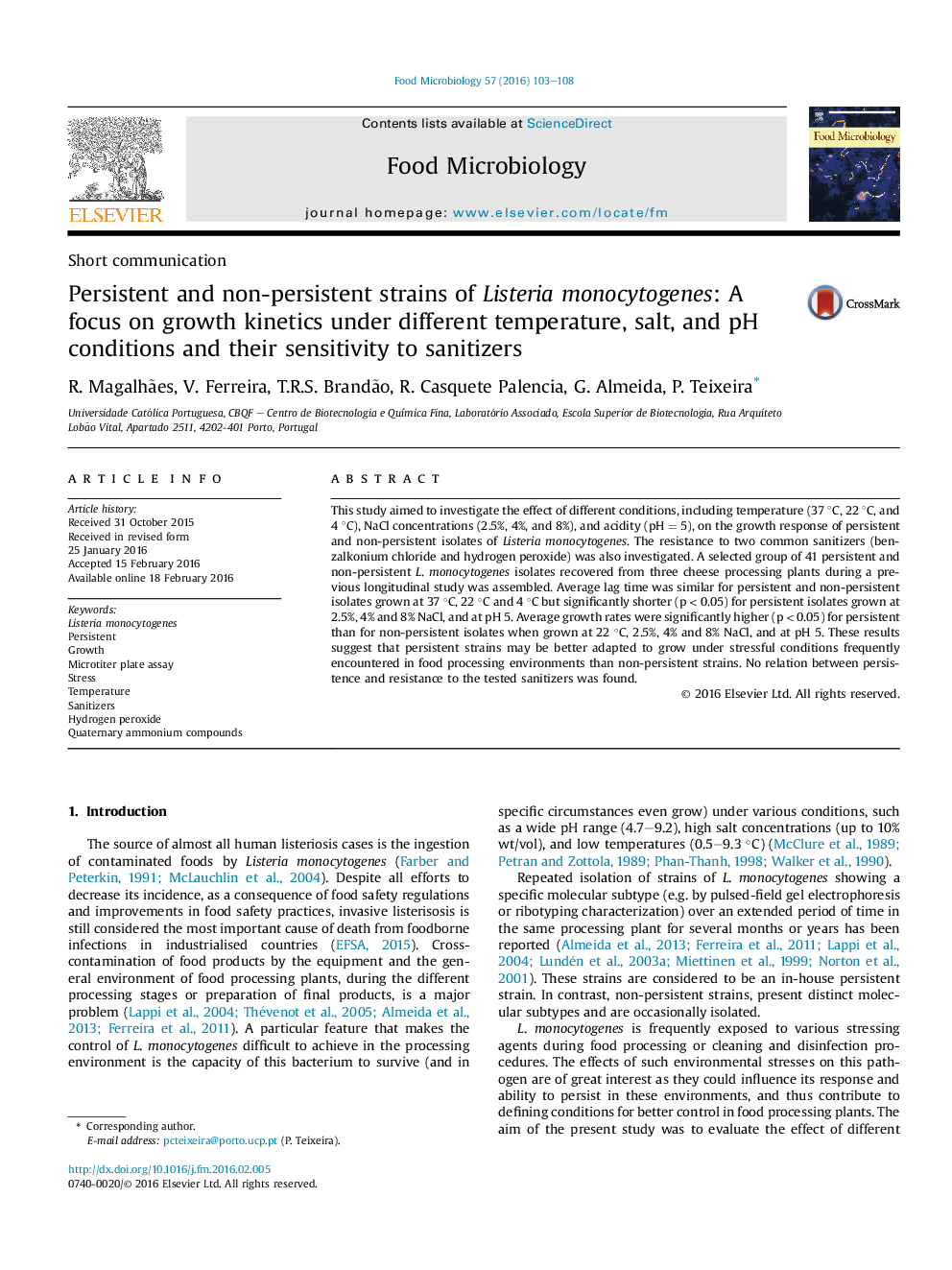| Article ID | Journal | Published Year | Pages | File Type |
|---|---|---|---|---|
| 4362606 | Food Microbiology | 2016 | 6 Pages |
•Growth rate and lag phase of persistent and non-persistent strains was compared.•Persistent strains seemed to be more adapted to stresses found in food premises.•Faster growth rate for persistent cells grown in the presence of NaCl and at pH 5.•Lower lag phase for persistent cells grown in the presence of NaCl and at pH 5.•No relation between persistence and sanitizer resistance.
This study aimed to investigate the effect of different conditions, including temperature (37 °C, 22 °C, and 4 °C), NaCl concentrations (2.5%, 4%, and 8%), and acidity (pH = 5), on the growth response of persistent and non-persistent isolates of Listeria monocytogenes. The resistance to two common sanitizers (benzalkonium chloride and hydrogen peroxide) was also investigated. A selected group of 41 persistent and non-persistent L. monocytogenes isolates recovered from three cheese processing plants during a previous longitudinal study was assembled. Average lag time was similar for persistent and non-persistent isolates grown at 37 °C, 22 °C and 4 °C but significantly shorter (p < 0.05) for persistent isolates grown at 2.5%, 4% and 8% NaCl, and at pH 5. Average growth rates were significantly higher (p < 0.05) for persistent than for non-persistent isolates when grown at 22 °C, 2.5%, 4% and 8% NaCl, and at pH 5. These results suggest that persistent strains may be better adapted to grow under stressful conditions frequently encountered in food processing environments than non-persistent strains. No relation between persistence and resistance to the tested sanitizers was found.
